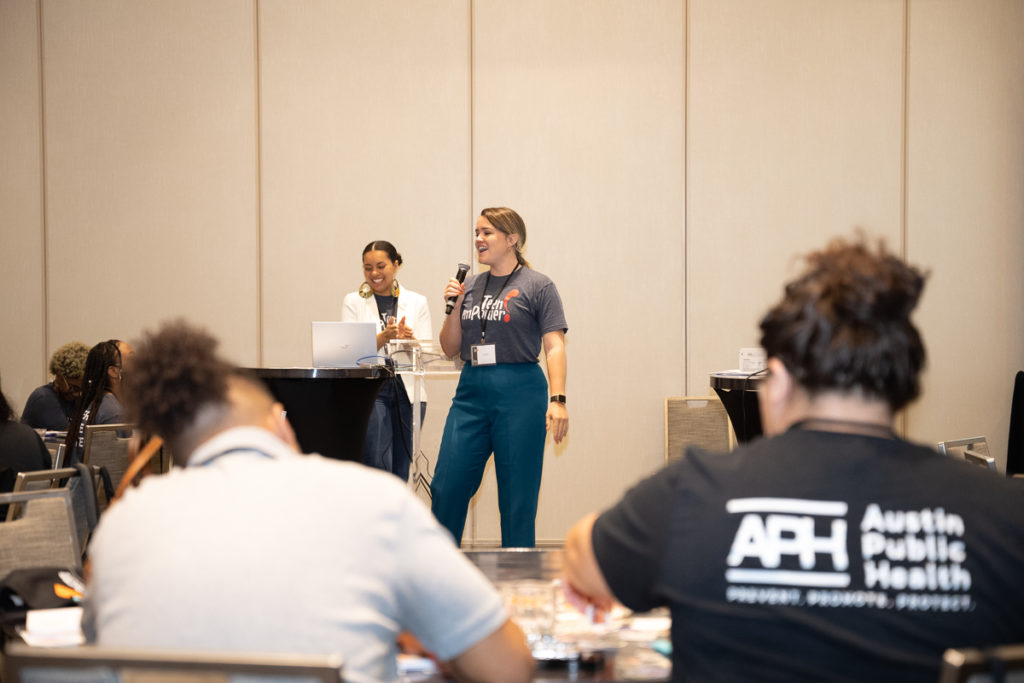Marketing public health programs can be a tricky process.
Most marketing materials and theories exist within the for-profit sector. However, using the same systems that caused many of the inequities we see today will not be effective–we can’t successfully or ethically use for-profit business structures when attempting to do public good. We still want our programs in the hands of the people who need them most, and borrowing successful tactics from the fields of marketing and business may be the best way to do this. This is the conundrum I found myself in when I was asked to develop a marketing plan for the new Pride Guide to STIs program, an online sex education program for LGBTQ+ young people in development at Healthy Futures of Texas.
First, I turned to existing literature for social marketing. Social marketing is the application of commercial marketing techniques not to create a profit but to drive social change and benefit society (1). Since its inception in the 1970s, social marketing theory has been used to tackle a wide-range of public health issues, from smoking to physical activity to HIV prevention to COVID-19 vaccination.
While social marketing is not typically used to promote a specific public health program, the framework is still helpful for understanding how to use traditional, for-profit marketing frameworks for a non-profit, public health program. Take, for example, the “marketing mix” or “4 Ps”. This is one of the basics of marketing which helps a corporation select appropriate marketing objectives and tactics for a given campaign: product, price, promotion, place. Social marketing theory guides us on how to use these 4 Ps to increase a population’s health, rather than a corporation’s profit (2).
- Product: Instead of a new brand of toothpaste or a seasonal clothing launch, the “product” for social marketing is the desired behavior or belief that will lead to better population health. Asking someone to stop smoking, eat more vegetables, recycle, take/use free condoms being distributed by a local health department, or reduce vaccine hesitancy could all be examples of products in social marketing.
- Price: Beyond just the actual monetary cost of an item which would usually be considered in traditional marketing, price is what social, material, or psychological cost might be at stake if the consumer were to take part in the desired behavior. Basically, what are the barriers for someone engaging in the desired behavior or participating in the program being promoted? Stigma, time, access, and comfort may all be potential “prices”.
- Place: This is how the product reaches a target consumer, including where it is sold and how it is distributed, but it’s more complex when there is no concrete product available. Place may include where potential consumers access the information being promoted through social marketing and where they can engage in the behaviors or programs being promoted. Carefully thinking about where someone engages in specific actions can help reduce barriers to engaging in the target behavior. For example, if you are aiming to reduce smoking with a social marketing campaign about the negative health consequences of cigarettes, placing ads at tobacco retailers may be an effective application of “Place”.
- Promotion: This is the portion of marketing that is most often thought of – the actual development and distribution of ads. “Promotion” asks what channels are being used to reach the target market and push messaging. Social media or radio ads? Distributing pamphlets at a local school or posting ads at a community center? Successful promotion is dependent upon the needs and habits of the target audience for the given program.
Considering the marketing mix is only the first step in developing a comprehensive marketing plan. I am a student of public health and not business, so naturally, I began to google, “Marketing plan template” to see if there was anything I could adapt for our purposes. I found a lot of examples, but, unfortunately, most were designed for commercial entities and those developed for non-profits or usage in the public health sector seemed to be less comprehensive by comparison.
I decided to make my own template. I borrowed extensively from existing commercial templates (3,4), creating sections for goals, buyer personas, selecting channels for promotion, competitor analysis, a SWOT analysis, a timeline, and a budget, among other components. I also added in some components more relevant to public health and social marketing, using guides from the CDC and published literature: this included considering social marketing theory in development, guidance on implementing an intervention, and more comprehensive evaluation (5).
Looking to business sites for guidance made me apprehensive at first. It is easy to think of business as fundamentally at odds with public health. Despite this tension, the tools of other fields should not be ignored just to maintain the integrity of doing the most social good: creating this marketing guide was an important lesson for me in the importance of occasionally expanding to business thinking to magnify the impact of public health programming.
Megan Ruprecht (she/her) is a summer intern with Healthy Futures of Texas and a student in the Master of Public Health (MPH) program at Northwestern University. In the future, she hopes to continue her work around LGBTQ+ health equity and reproductive health. In her free time, Megan enjoys teaching her cat tricks and cross stitch.
- Chute R. What is Social Marketing? (4P’s and Key Strategies). 2022; https://sellingrevolution.com/blog/what-is-social-marketing-4ps-and-key-strategies/#:~:text=Social%20marketing%2C%20like%20commercial%20marketing,%2C%20price%2C%20place%20and%20promotion. Accessed May 16, 2022.
- Weinreich, NK. What is Social Marketing? N.d.; https://www.social-marketing.com/whatis.html. Accessed June 13, 2022.
- Riserbato, R. 5 Steps to Create an Outstanding Marketing Plan. 2016; https://blog.hubspot.com/marketing/marketing-plan-template-generator. Accessed June 13, 2022.
- Wahl, J. How to Write a Marketing Plan That Works. 2018; https://learn.g2.com/marketing-plan. Accessed June 13, 2022.
- Centers for Disease Control and Prevention. CDCynergy Lite: Social Marketing Made Simple. https://www.cdc.gov/healthcommunication/pdf/cdcynergylite.pdf. Accessed June 13, 2022.


